Welcome
In this issue of Wild Edition, you’ll get updates on some changing dynamics in the family gorilla troop and the maturing lion pride, gain insight about the work being done with whooping cranes, and find out how you can take part in Conservation Action Trips!
Don’t forget to share your thoughts in the survey at the bottom of the page. As always, we thank you so much for your support in Creating a Better World for Animals.
Crab Trip
Conservation Action Trip: Saving Blue Crabs
By Katie Emmons, Conservation Programs Coordinator
In February 2022, Zoo staff from a variety of departments went on a trip down to Aransas Bay to remove derelict crab traps.
A healthy blue crab population is critical to the success of so many species, including humans. While removing derelict or abandoned crab traps will most definitely help keep blue crab populations healthy, these removal efforts also help keep our bays free of debris that can cause costly repairs to boaters if hit by their motors, save diamondbacked terrapins and other animals who might get stuck in these ghost traps, protect sensitive sea grass habitat, help whooping cranes who LOVE to eat blue crabs while they’re wintering here in Texas, and so much more!
The crabbing season closes for about two weeks at the end of February so Texas Parks and Wildlife, along with volunteers from all over, can remove abandoned crab traps from our bays. This year, a total of 1,047 traps were removed, and your Dallas Zoo’s Wild Earth Action Team removed 31 of those traps over the course of the two days they were helping with the removal efforts. To put our efforts into perspective, it is estimated that, if left in the bay during the two-week closure period, each crab trap has the potential to capture approximately 13 crabs. So, by removing 31 traps, we saved about 403 crabs. To take it a step further, an adult whooping crane can eat about 80 blue crabs each day! That means that through our efforts, we helped ensure one adult whooping crane has enough to eat for five days.
Our participation and support of the Removing Abandoned Traps program started in 2020 (we missed 2021 because of the winter storm) and is also an important component of our Zoo Parks Partnership with the Aransas National Wildlife Refuge.
Want to be part of the action?
Join us on one of these projects!
We are Family
As the family gorilla troop welcomes a new patriarch into the fold, the lion pride shifts into new groups as its cubs mature
By Alaena Hostetter, Guest Contributor
Just as human families change over time with births, deaths, and individuals who grow up and leave the nest to start families of their own, the Dallas Zoo’s animal families also evolve. One such story starts with Marcus, a 310-pound male silverback gorilla, who joined the Dallas Zoo’s gorilla family troop last year.
Marcus came to Dallas from the Albuquerque BioPark Zoo under approval from the Association of Zoos and Aquariums’ (AZA) Species Survival Plan (SSP), which dictates breeding recommendations to maintain genetic diversity. He’s here to fill the patriarchal role that was left open after silverback gorilla Subira passed away in 2020. 35-year-old Marcus was selected for the Dallas Zoo’s family troop because of his experience with female gorillas and their babies, according to Tara Schilke, an assistant zoological manager at the Dallas Zoo.
“We had to be really careful with the male that we chose for this family,” Schilke said. “We didn’t go with a younger male because they’re not as mature when it comes to dealing with troop dynamics.”
But before assimilating, he’d first have to prove himself with the three adult female gorillas in the family troop. Shanta, Megan, and Asha were suspicious of this newcomer and highly protective of the youngest gorillas in the troop, Mbani and Saambili.
HOWDY, Y’ALL
Introducing Marcus to his new Texan family required careful planning and coordination by the Dallas Zoo team to make sure it was a safe interaction for all. Animal introductions begin with a “howdy,” which allows the animals to see and smell each other while still physically separated. Plus, it gives them the option to move away into another space if they feel the need.
“We keep it short and sweet to make sure the interactions are not overwhelming for the animals,” Schilke said.
Soon after the howdy, the animals are allowed to interact while still being closely monitored. From the start of the introduction, Shanta, Megan, and Asha gave Marcus a run for his money: posturing at him, taking his food, running by him, and knocking things over. Gorillas use intimidation “displays” to defend their offspring, their food, and their environment from intruders.
“They were testing Marcus — letting him know that they’re not going to allow him to come in and take over,” Schilke said. “The females have been very protective of the younger gorillas. If they didn’t have the little ones, they probably would have been more accepting of Marcus.” Now that they have had a chance to get to know him, Shanta, Megan, and Asha have settled into peaceful cohabitation with Marcus.
RUMBLE IN THE JUNGLE
While the ladies were more difficult to win over, it’s been smooth sailing for Marcus and youngsters Mbani and Saambili, aged 3 and 4 years, respectively. “The young gorillas like to come down and watch him in his bedroom,” Schilke said. “He’ll ‘rumble’ at them, which sounds like a deep purr.”
Rumbling is a good sign that things are going well between Marcus and the two youngest gorillas. “It’s an appeasement sound,” Schilke explained. “It’s used as a greeting or a signal that they’re happy, that everything is okay.”
Marcus also rumbles at the zoologists, which is a really great sign that he feels comfortable in his new environment. “It’s pretty wonderful,” Schilke said. “All of the humans here have fallen in love with him. Overall, Marcus is handling everything beautifully. He’s a cool guy, and it’s really sweet to see him interact with the little ones.”
FROM COMING TOGETHER TO GROWING APART
Over in the Giants of the Savanna, lion cubs Izwi, Ilola, and Tadala, which the Dallas Zoo welcomed in August 2020, are almost fully grown. Clocking in at 300 pounds for Izwi (male) and 220–230 pounds for Ilola and Tadala (females), these cubs have reached sexual maturity, meaning that the time has come for them to separate.
In the wild, adolescent males typically break off from their family to form their own pride. Since Izwi can’t do that at the Dallas Zoo, staffers have gotten creative with how to group this evolving family, including father Kijani, mother Bahati, grandmother Lina, and great-aunt Jasiri, until the SSP makes a recommendation for one or more lions to relocate to different AZA-accredited facilities to start new families.
“At the Dallas Zoo, we have a big habitat space — five bedrooms and two holding yards — so we definitely have enough space to mix and match them,” said Maggie Kloza, a senior zoologist who works with the lions.
“Usually, if the two younger girls are inside, we have an adult female with them — kind of like their babysitter,” she said. “The father-and-son duo, Kijani and Izwi, are getting along really well, so they’re usually together. Kijani is more of a chill male, so he’s probably going to be fine with Izwi for quite a while, even though teenage males can be kind of annoying.”
FELINE SURPRISE
With the mixing and matching, there’s no predicting who’s going to be on habitat at any given time, making it a dynamic experience for visitors. Regardless, it’s bound to be entertaining with the lions’ unique personalities.
The first born of the triplets, Izwi is super smart and picks up on things quickly. “He tries to mimic the older cats — especially the behaviors we’ve taught them like opening their mouths to get a treat,” Kloza said. Also rare for lion behavior: “He was the first lion I’ve seen to go into the pool. Typically lions don’t like water.”
Ilola, “the middle child,” is quiet and sensitive like her father, Kijani. On top of that, “she’s very stubborn,” Kloza said. “She is less eager to train and less motivated by food. She’ll just walk away if she’s not interested.”
In contrast, her sister, Tadala, is spunky, playful, and loves the spotlight like their mom, Bahati. When she goes into the demonstration area, it can take another hour to coax her out if visitors are showering her with attention.
She also has a penchant for being silly. “She’s always trying to play with the other lions — sneaking up behind them or trying to wrestle — even if they’re not into it,” Kloza said. “If you see a lion sitting awkwardly on a rock, log, or another lion, it’s Tadala,” Kloza said with a laugh.
Despite their different personalities, sisters Tadala and Ilola are two peas in a pod and enjoy spending a lot of time together.
You can watch these fun family dynamics by visiting the lion pride in the predator habitat at the Giants of the Savanna and the gorilla family troop along the Gorilla Trail in the Wilds of Africa. Stop by in the morning — the gorillas tend to be at their most active then, and the lions are often featured in our predator encounter, which takes place at 10:30 a.m. daily.
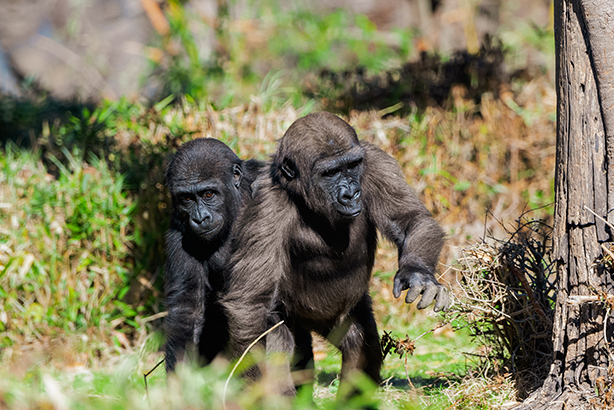
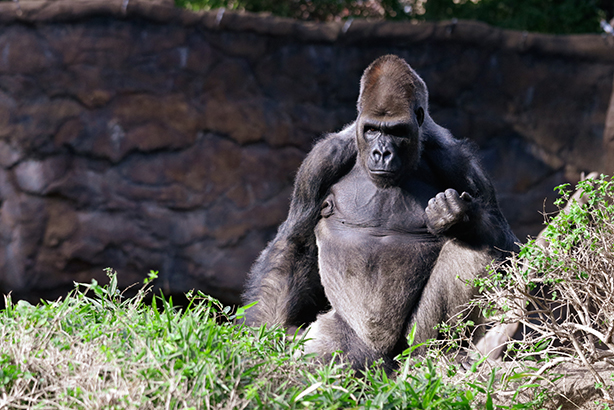

Whoop, There’s a Crane!
By: Alaena Hostetter, Guest Contributor
A tall, graceful, water-loving bird native to the Texas coastline, whooping cranes are quite a sight to behold — and not only due to their striking physique, but also their rarity. The tallest bird in North America (at five feet with an impressive wingspan of eight feet), whooping cranes were almost wiped out in the first half of the 20th century due to hunting and habitat encroachment.
In the 1940s, with only about 20 birds remaining, conservationists jumped into action to save this breathtaking bird. Efforts have been under way in the decades since to boost whooping crane numbers in the wild.
The Dallas Zoo is one of seven facilities in North America contributing to these efforts by breeding them in at its offsite facility, the Whooping Crane Center of Texas (WCCT) in Mesquite, for future release.
HATCHING A BABY BIRD
Even with all the resources at the Zoo’s fingertips, rearing a whooping crane is anything but straightforward.
These notoriously finicky breeders are sensitive and territorial, which can impact their desire to mate. “Each pair needs a large amount of space to reproduce,” said Sprina Liu, Dallas Zoo’s curator of birds and ectotherms. “Relocating them is also tricky — whether it’s to another facility or a different holding pen. It takes time for them to get back on track.”
Compounding the issue, whooping cranes typically mate for life unless something happens to their partner, in which case they’ll get “remarried.” When they’re paired with a new bird, the courtship phase can be rather long.
One of the more recent additions, Barbarino, arrived from Wisconsin’s International Crane Foundation (ICF) in late 2021. “She’s still settling in with her new mate, Dante,” staffers said.
Bonded pair, Huckleberry and Juniper have been setting a good example for other whooping cranes at the facility. “Huckleberry is very protective of his mate and his territory,” said Senior Zoologist Bertha Munuku. “Juniper is very bonded to Huckleberry and loves to dance with him.”
The WCCT facility currently houses four breeding pairs, which were matched according to their personalities and genes by the Species Survival Plan (SSP), and one additional whooping crane, for a total of nine birds. The facility’s goal is to double its capacity in order to house 10 pairs (20 whooping cranes total).
BREEDING BASICS
The Zoo’s whooping cranes have laid two eggs since the facility opened in August 2019. “This year, we’re hoping for the best,” Liu said.
Whooping cranes stick to a yearly breeding schedule, which begins in the spring and works its way through the summer months.
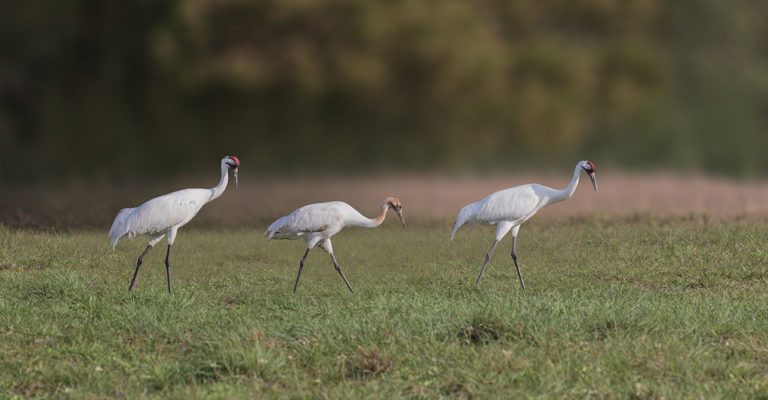
March
The birds start exhibiting breeding behaviors like nest building, vocalizations, and mating dances that include a lot of leaping, wing flapping, and head tossing.
April–June
Females lay eggs — generally two at a time in each clutch. Whooping cranes can lay a second clutch during the season, if the first clutch isn’t viable.
May–July
Eggs hatch after incubating for about 30 days, then the hard work of rearing begins. Zoologists historically have hand reared the first clutch of chicks to allow parents to lay a second clutch in the season, in hopes of doubling the amount of chicks each year. Dressed in all white, these human “parents” teach chicks proper crane behavior with a puppet arm that looks like the head of an adult bird, which is why this technique is called “puppet rearing.”
FALL
Chicks are ready for their debut into the wild. The SSP, in coordination with the U.S. Fish and Wildlife Service, decide which chicks should be released each year. The chosen chicks are transported from the Zoo’s facility to one of two release facilities in the U.S. that are designed to introduce these hatchlings into a flock of wild birds.
While dedicated conservation efforts have increased whooping crane populations to more than 650 wild birds (with another 140 in zoological facilities), there’s still more work to be done to fully rebound their numbers in the wild and pull this species out of endangered status.
Fundraising is still under way to cover the cost of construction and equipment for WCCT’s next phase. Funds are needed to build a pre-release yard where young birds will be taught survival skills, including how to forage for live prey, avoid predators, and refine their flight abilities. Plus, zoologists need an incubation area and hand-rearing space for chicks.
The Dallas Zoo received a challenge match of $500,000 from the Eugene McDermott Foundation to help us complete this project and we need your help to claim these funds! When you make a gift today, your support will be matched dollar for dollar.
Nature Walk Activity
Going on a nature walk with your family is a great way to discover all the amazing wildlife and nature in your own neighborhood! Hover or click on the images to uncover native Texas wildlife.
Can you find all the pairs on your family's next nature walk?
Nest
Bird
Pond
Duck
Bloom
Bee
Dirt
Snail
Acorn
Oak tree
Web
Spider
Upcoming Member Events
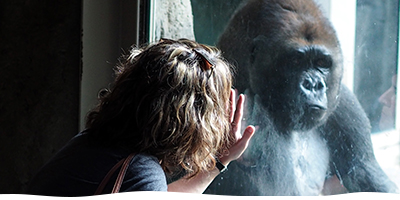
Member Mornings: Gorillas
July 2 & 3, 8-9 a.m.
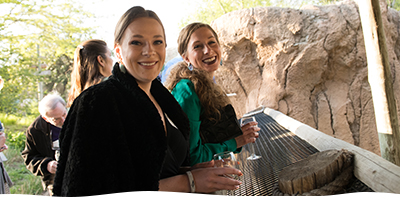
Sunrise Happy Hour
July 30
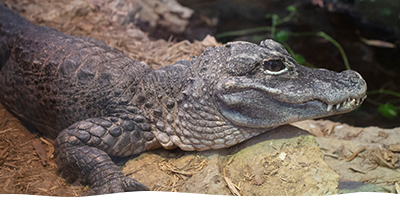
Member Mornings: Herpetarium
August 6 & 7, 8-9 a.m.
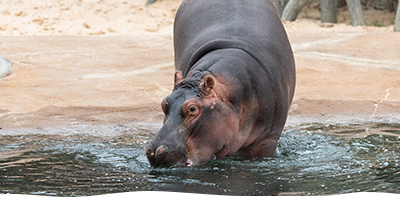
Behind-the-Scenes: Hippos
August 25

Member Mornings: Cheetahs
September 3-5, 8-9 a.m.
Event invitations to follow; registration required.
Updates

Free Drink Coupon
You’ve got a new member coupon! This one-time-use coupon gets you a free conservation cup fountain drink with the purchase of a basket meal in the Prime Meridian Cafe, Serengeti Grill, or Bantu Barbeque. Stop by the Membership Booth on your next visit to pick up your printed coupon.
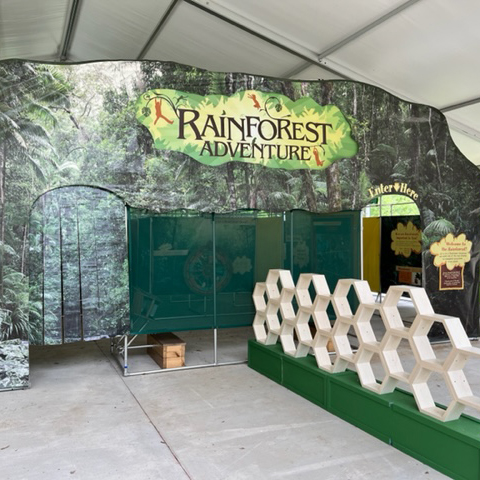
Rainforest Adventure
Navigate a maze that takes you through four layers of the rainforest to learn about the biodiversity that makes rainforests some of the most unique places on the planet. Now open on Picnic Ridge, Rainforest Adventure is included with Zoo admission and free for members, but donations for our conservation initiatives are appreciated.
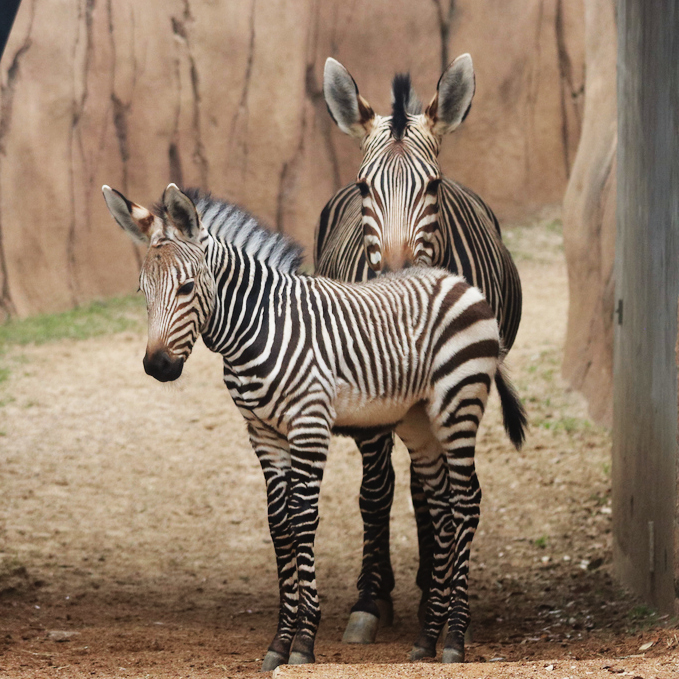
Baby Zebra Update
Philipus is now three months old and he is absolutely thriving! While he still has his adorable, fuzzy baby coat, he is growing quickly and testing out his strength and agility as he is exploring the habitat. He even loves to prance like a show pony! Though he is now eating grain and produce, our very curious zebra foal never wanders too far from mom Wanda.

Safari Nights is Back!
Saturdays through July 2
Stay late to see a different band at the Zoo every Saturday evening. Concerts begin at 7 p.m., and members get FREE admission!
MAY 28 | Hard Night’s Day | Beatles Tribute
JUNE 4 | Forever Mac | Fleetwood Mac Tribute
JUNE 11 | Midnight Soul | Party Band 60s—Now
JUNE 18 | The Elton Johns | Elton John Tribute
JUNE 25 | The Coppertones | Rock & Soul Review
JULY 2 | Escape | Journey Tributes

Summer of Kids Club
Members at the Passport level and above are invited to visit all Kids Club organizations for free this summer! See your invitation email for links to reserve tickets.
Meadows Museum: June 7-12
Perot Museum of Nature and Science: June 13 and evening of June 15
Trinity River Audubon Center: July 18-22
Dallas Museum of Art: August 11-14
Want to join the fun? Contact us at Members@DallasZoo.com or 469.554.7400 to upgrade!
Give us your feedback!
Thank you to our 2022 Sponsors
Signature Partners

Premier Partners



